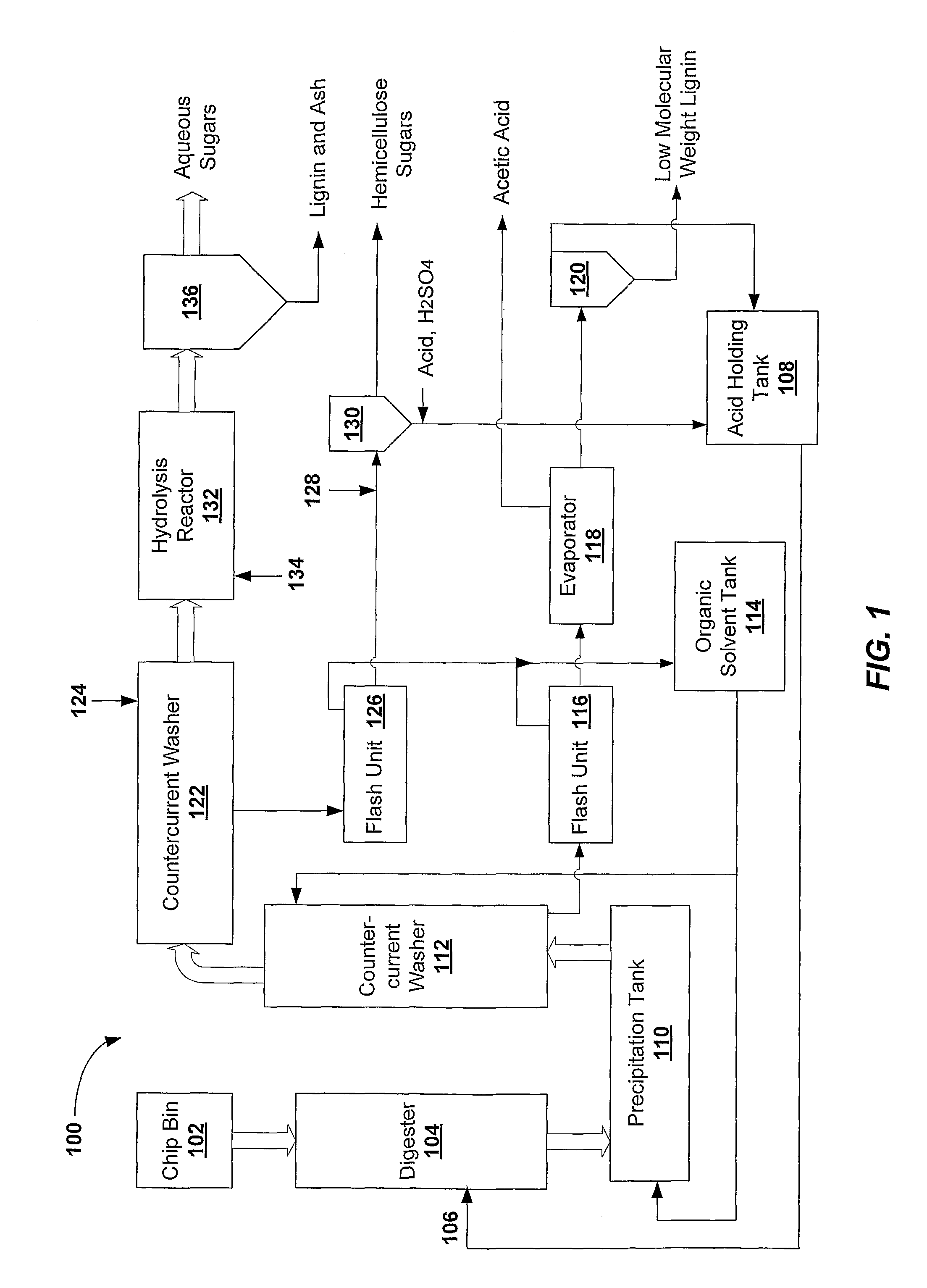Method and Apparatus for Saccharide Precipitation From Pretreated Lignocellulosic Materials
a technology of pretreatment and saccharide, which is applied in the field of biomass processing, can solve the problems of high cost of enzymes, add an additional step requiring energy input, and slow enzymatic hydrolysis process, and achieve high saccharide yield and fast hydrolysis rate. , the effect of low boiling poin
- Summary
- Abstract
- Description
- Claims
- Application Information
AI Technical Summary
Benefits of technology
Problems solved by technology
Method used
Image
Examples
Embodiment Construction
[0015]There will now be shown and described a method for increasing process efficiency in making useful products out of lignocellulosic biomass. Efficiency may be gained by the present method which advantageously:[0016]increases sugar yields;[0017]decreases the amount of cellulase required for hydrolysis;[0018]performs pretreatment processes at ambient or modest temperature and pressure;[0019]increases hydrolysis rates;[0020]reduces or avoids formation of inhibitor molecules;[0021]decreases energy and equipments costs associated with chemical separation and solvent recovery; and[0022]allows for isolation of high value by-products.
[0023]FIG. 1 shows one embodiment of a reactor system 100 that may be used for biomass conversion. Particulate lignocellulosic material from a chip bin 102 is added to a digester 104. The particulate lignocellulosic material may range in size from less than 1 millimeter in diameter to several inches in diameter, and may, for example, have been previously pr...
PUM
| Property | Measurement | Unit |
|---|---|---|
| Time | aaaaa | aaaaa |
| Volume | aaaaa | aaaaa |
| Solubility (mass) | aaaaa | aaaaa |
Abstract
Description
Claims
Application Information
 Login to View More
Login to View More - R&D
- Intellectual Property
- Life Sciences
- Materials
- Tech Scout
- Unparalleled Data Quality
- Higher Quality Content
- 60% Fewer Hallucinations
Browse by: Latest US Patents, China's latest patents, Technical Efficacy Thesaurus, Application Domain, Technology Topic, Popular Technical Reports.
© 2025 PatSnap. All rights reserved.Legal|Privacy policy|Modern Slavery Act Transparency Statement|Sitemap|About US| Contact US: help@patsnap.com


